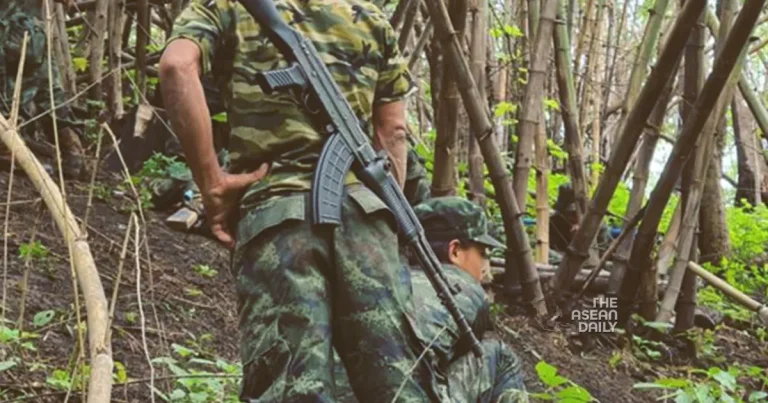6-12-2023 (SYDNEY) Myanmar’s ongoing conflict between rebel forces and the Tatmadaw, the country’s military, is poised to reshape its political and security landscape. The Three Brotherhood Alliance, consisting of three ethnic armed organizations, has launched a coordinated offensive codenamed Operation 1027 against the ruling military junta since October. Comprising the Ta’ang National Liberation Army, the Myanmar National Democratic Alliance Army, and the Arakan Army, these groups have targeted areas and military outposts under Tatmadaw’s control.
The success of this joint offensive has garnered support from other rebel factions and local groups opposed to the regime. The People’s Defence Force and the Communist Party of Burma’s People’s Liberation Army have intensified their fight against the Tatmadaw. Over the past month, various rebel forces have captured junta outposts and seized significant territories, including towns and border crossings with India and China.
The outcome of this latest phase of fighting hinges on two key factors: the ability of the rebel forces to sustain their offensive and the Tatmadaw’s capacity to regroup and mount a counteroffensive.
Several indicators suggest that the rebels currently hold the upper hand on the battlefield. Given the junta’s brutal actions, the rebels can rely on considerable popular support. The local population plays a crucial role in any insurgency, providing tangible assistance such as intelligence, materials, and personnel. Myanmar’s military generals have garnered little love, as evidenced by their imprisonment of nearly 20,000 people and the internal displacement of almost 1 million individuals since the February 2021 coup. The junta’s strategy to suppress opposition, known as the “four-cuts,” has terrorized civilians. Additionally, the junta’s air force has targeted civilian targets, further eroding support for the generals.
Moreover, the rapid success of the rebels in capturing Tatmadaw outposts has granted them access to additional weaponry and ammunition. Social media posts featuring pictures and videos indicate that the rebel forces have acquired armored vehicles and artillery pieces, which could be deployed against the Tatmadaw in future offensives.
The rebels currently maintain the initiative on the battlefield, forcing the Tatmadaw to relinquish multiple positions and retreat across various fronts. Possessing the initiative is critical, as it compels the enemy to conform to one’s objectives and pace according to military theory.
However, theory alone may falter when confronted with reality. Can the Tatmadaw regain the initiative and organize an effective defense, followed by counterattacks to recapture lost territory? At present, such a task appears insurmountable.
The Tatmadaw seems overextended, not only engaging with the rebels but also facing anti-junta forces within its controlled areas. Reports of the assassination of one of the junta’s allies in Yangon demonstrate the challenges they face.
A recent study estimated the Tatmadaw’s strength at approximately 150,000 personnel, with 70,000 serving in combat units. While it is important to note that Vietnam and Myanmar are not direct historical comparisons, this figure helps illustrate the scale of the junta’s predicament. Myanmar is geographically larger than Vietnam, with dense jungles and mountains scattered throughout, making it exceedingly difficult for the Tatmadaw to combat rebel forces simultaneously across the entire country.
Low morale within the Tatmadaw is also evident. There are reports of units surrendering without resistance or offering feeble opposition before capitulating. In some cases, Tatmadaw troops have abandoned their posts and fled to neighboring India. Recruitment to replenish losses is also a significant challenge.
As Tatmadaw’s losses accumulate, they may retreat to major population centers and military bases. With rebel forces controlling much of the countryside, isolating Tatmadaw units defending these areas becomes plausible. The junta may employ its air power to push back the rebels, but history has shown that air power alone is insufficient to secure victory in an insurgency. The Vietnam War serves as a stark example, where the United States dropped over 5 million tonnes of bombs but ultimately lost.
Continued pressure from the rebels could potentially lead the junta to the brink of defeat. Negotiating a peaceful power transfer would be a preferable alternative to a protracted conflict that may ultimately result in their overthrow. Myanmar has experienced enough bloodshed, and the country deserves an opportunity for democracy to flourish.




